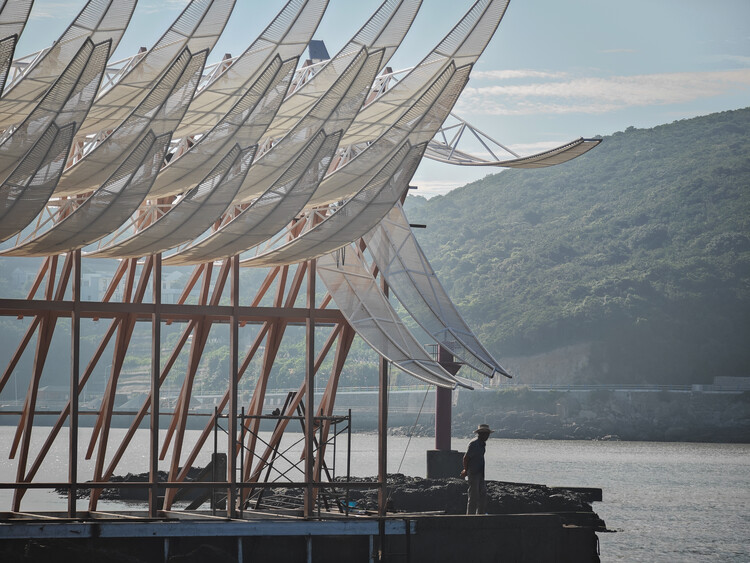
-
Architects: GN Architects
- Area: 75 m²
- Year: 2024
-
Photographs:Wenjun Liang, Fangfang Tian
-
Lead Architects: Shen Lijiang

Text description provided by the architects. The pavilion aims to recreate this sense of arrival at the island's entrance, enhancing the village's context and establishing a distinct identity. The original concept relied on tidal movements for motion. When visitors sat in the pavilion, the waves and the structure would rise and fall together over hours. However, to consider the primary audience—tourists—the design has been revised to use wind power for instant effects. The form has also been optimized to make the changes more noticeable.


After several site surveys, the chosen location is a defunct cargo pier from the 1960s, situated between the new passenger terminal and the village. Surrounded by jagged rocks with a backdrop of blue skies and sea, the site offers a perfect setting.


The design features elongated blades suspended from a frame, swaying gently in the sea breeze and moving in harmony with the waves. This poetic yet practical setting repurposes the old pier with repairs and new railings, turning it into a gathering and resting place for the island's elderly. Most of the time, they sit silently, gazing at the ferries as they dock and observing the brief bustle when visitors arrive.



The installation was prefabricated in a factory and transported over two days by three large trucks to Zhoushan, then shipped to Chaishan Island using a rented 300-ton cargo vessel and crane. All equipment needed for assembly was also transported by sea.


The structure comprises 36 seven-meter-long blades, grouped into sets of three. Each blade's initial position was precisely calculated through computer simulations, with weights balanced for optimal movement. A single blade is connected to the main support through a bearing, and the tail of the blade is equipped with a counterweight block for adjusting the balance of the main and secondary stages.To prevent collisions, linkages and limiters were added between the blades. After testing various options, including flexible springs and hydraulic buffers, rubber was chosen for its simplicity, UV resistance, and corrosion resistance.

Given the coastal location, the installation uses corrosion-resistant steel and anti-rust coatings. While fabric membranes were originally planned for the blades, higher-strength fishing ropes were selected for better durability and wind resistance. The blades sway slightly in a gentle breeze (Force 3 wind) and move visibly at Force 5. In case of a typhoon, the blades can be securely tied to the frame to prevent damage.




















